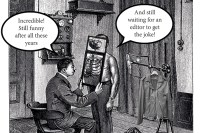Boris Johnson can breathe a sign of relief this morning after the Conservatives held Old Bexley and Sidcup. In a by-election triggered by the death of the former MP and cabinet minister James Brokenshire, Tory candidate Louie French won over 50 per cent of the vote, with Labour coming in second. However, despite this victory, the Tory majority has been reduced from 19,000 to 4,478.
Even taking into account the reduced turn out, the Tory vote share has fallen
Both the Tories and Labour are claiming the result as a success this morning – with members of the shadow cabinet pointing to the swing towards Labour as proof they are back in business. Meanwhile, Tory MPs say that the percentage of the vote is the thing to focus on – citing it as a strong result for a government mid term.
So what’s behind the reduced majority? On first inspection, there appear to be several factors at play. First, low turnout at 34 per cent: the lowest at a by-election since 2018. Tory MPs who had been sent to the seat to campaign reported a lack of enthusiasm on the doorstep following a tricky few weeks for the party sparked by the Owen Paterson row.
Even taking into account the reduced turn out, the Tory vote share has fallen – down 13 per cent from the last election. What helps the Tories is that the opposition vote split. Labour’s vote share went up by 7.4 per cent while Richard Tice’s Reform UK party won 6.59 per cent of the vote.
While the Tories held the seat, the reduction to the Tory majority will only add to nerves over the North Shropshire by-election later this month. As I reported earlier this week, that by-election is viewed as the trickier of the two. If the majority in the safe seat of Old Bexley and Sidcup can be slashed to below 5,000, the vote in the by-election sparked by Owen Paterson’s resignation has plenty of scope for a Tory upset.







Comments